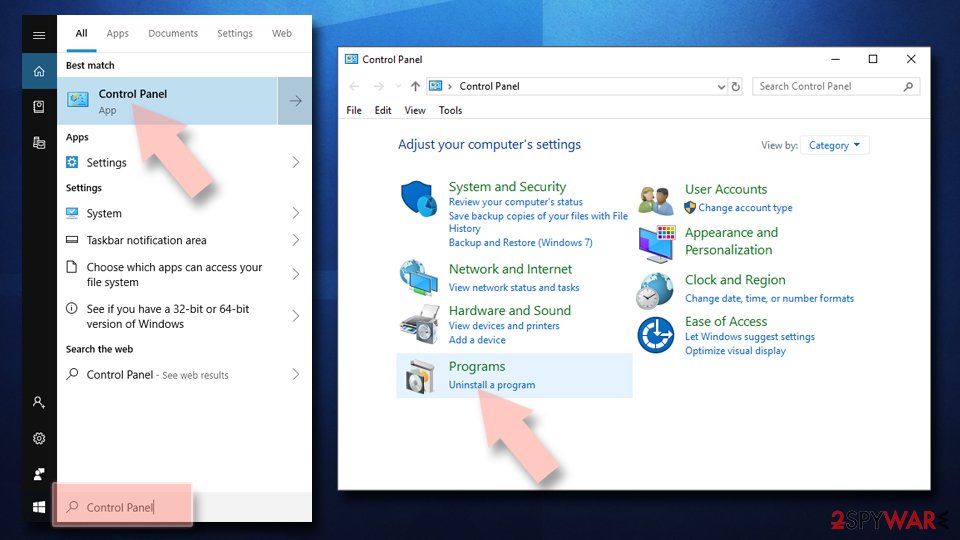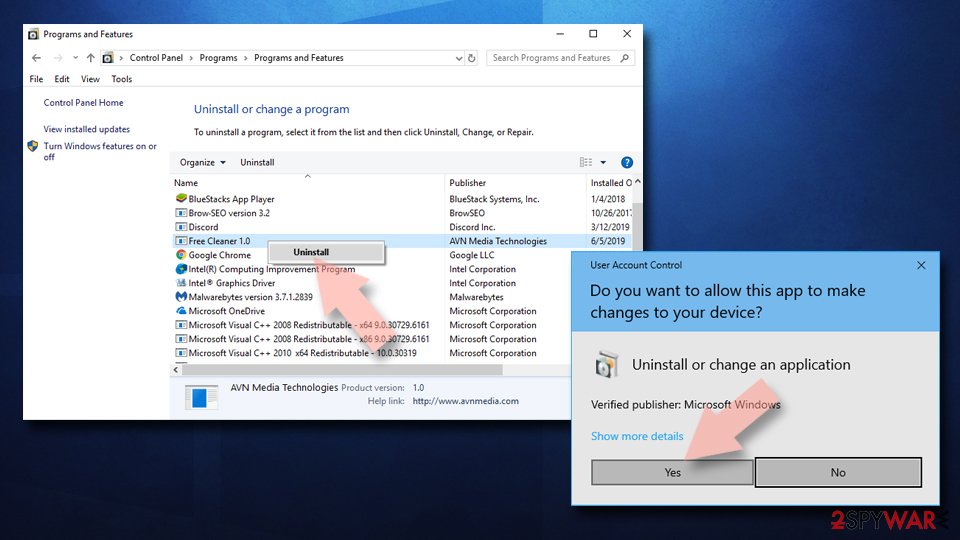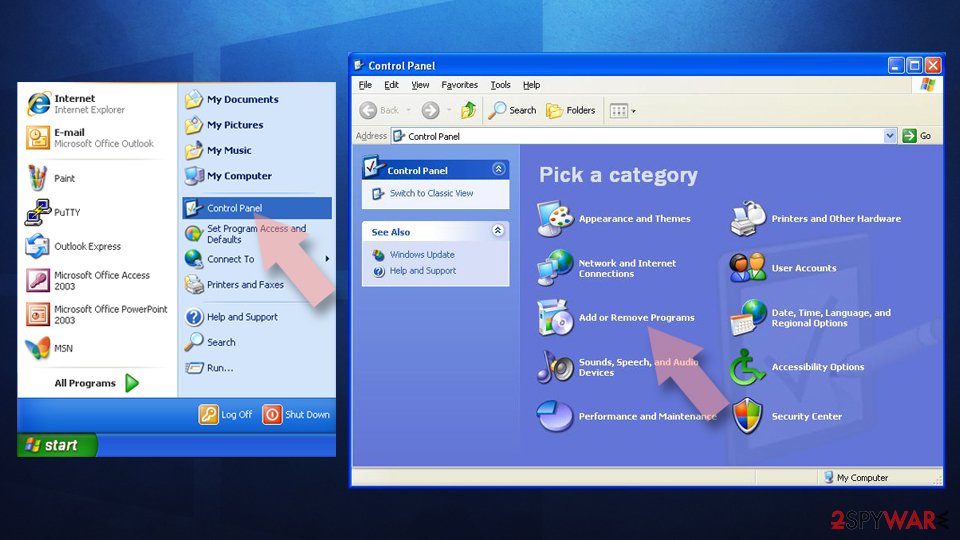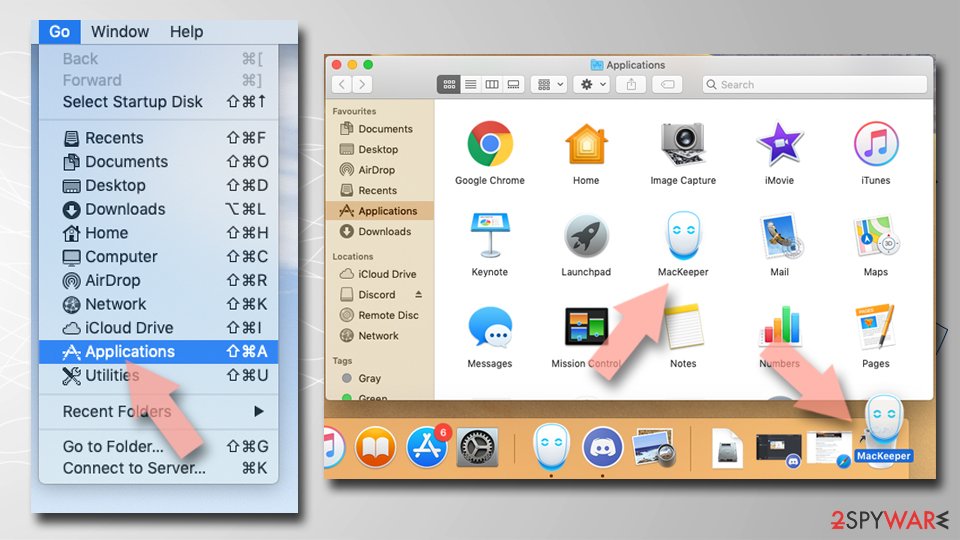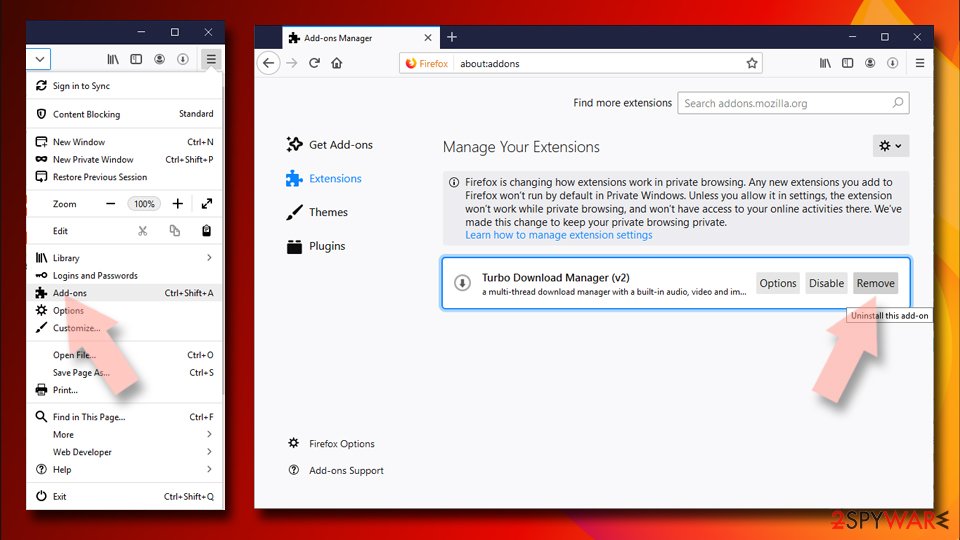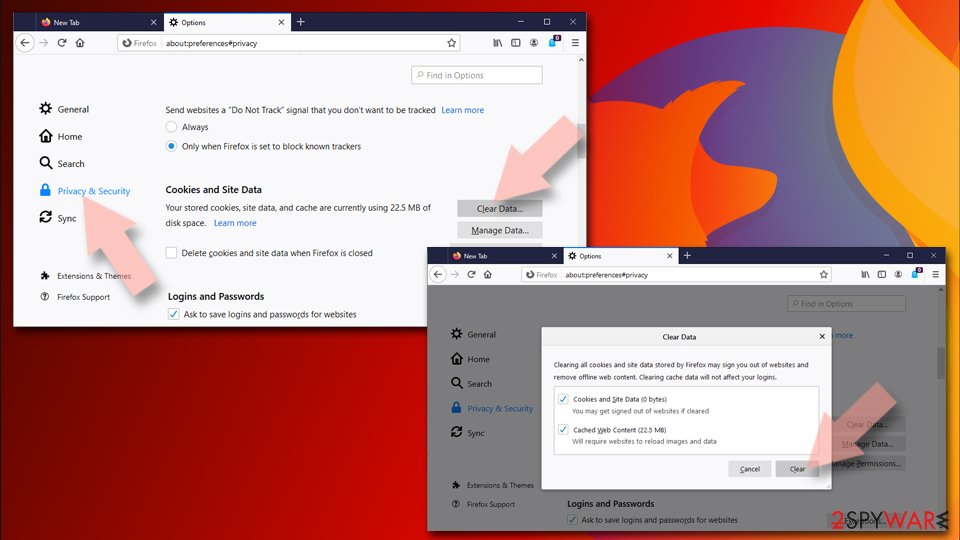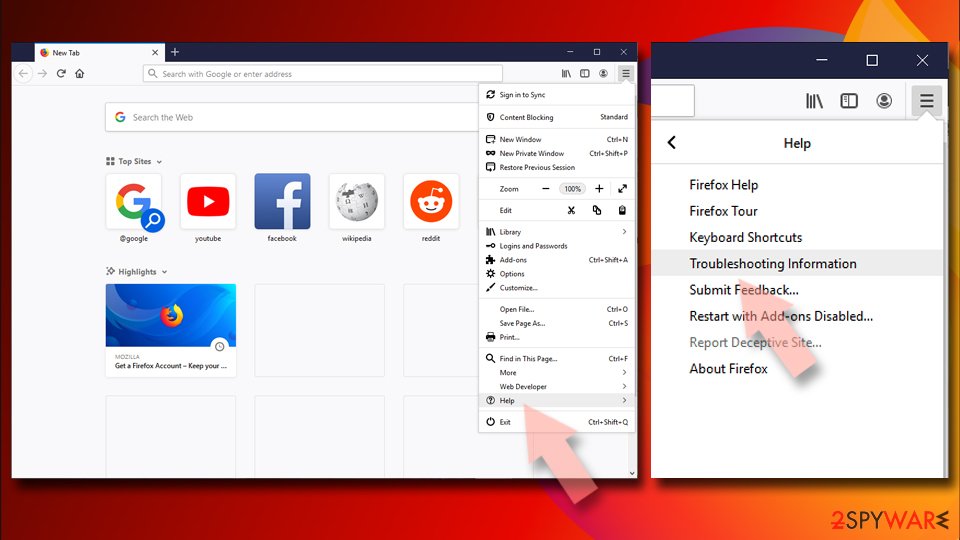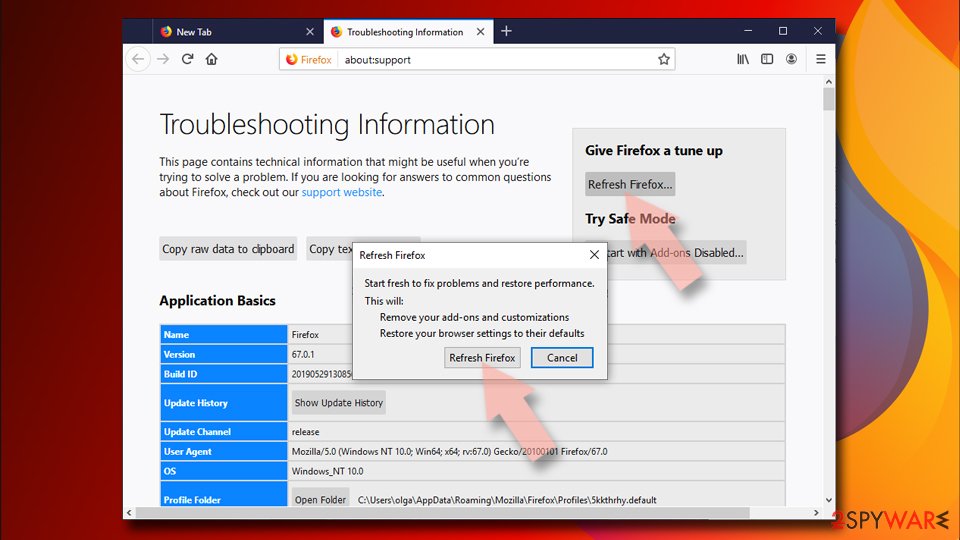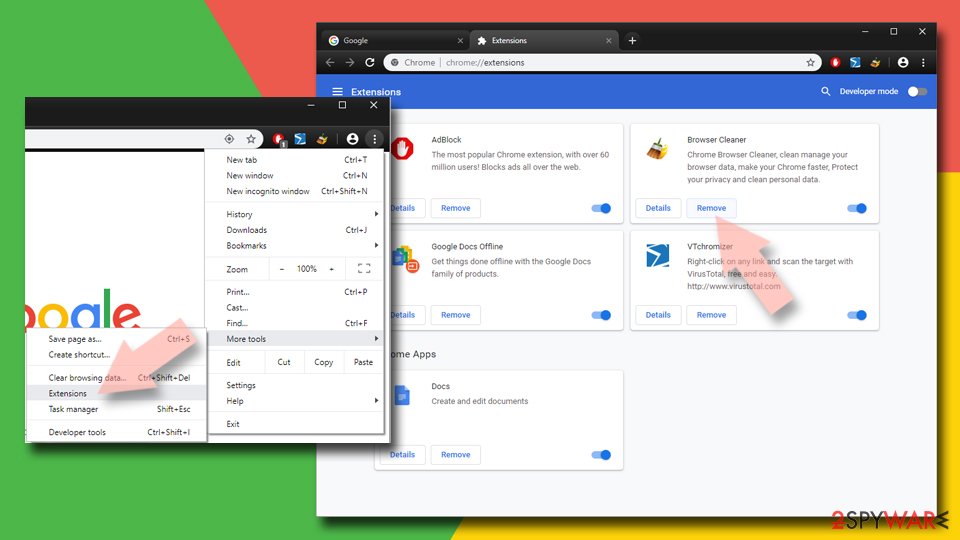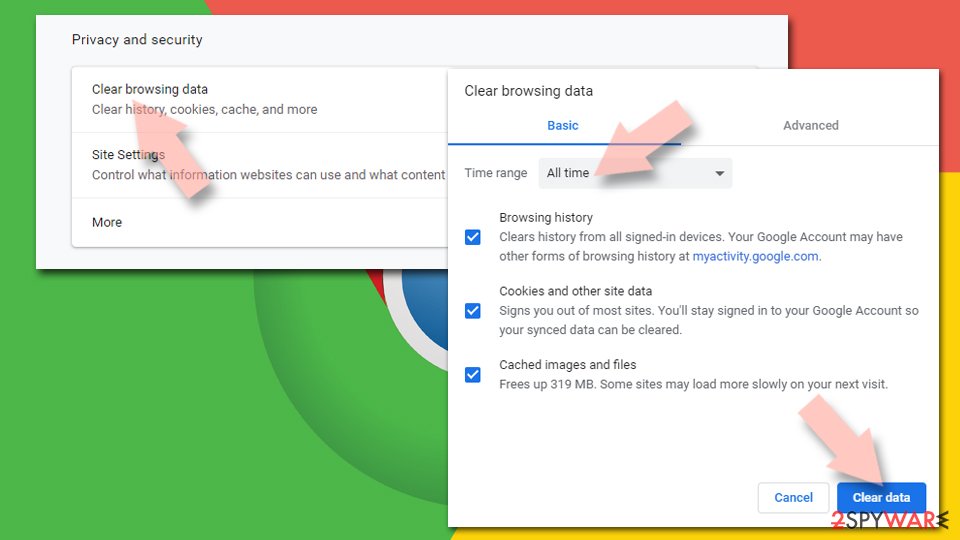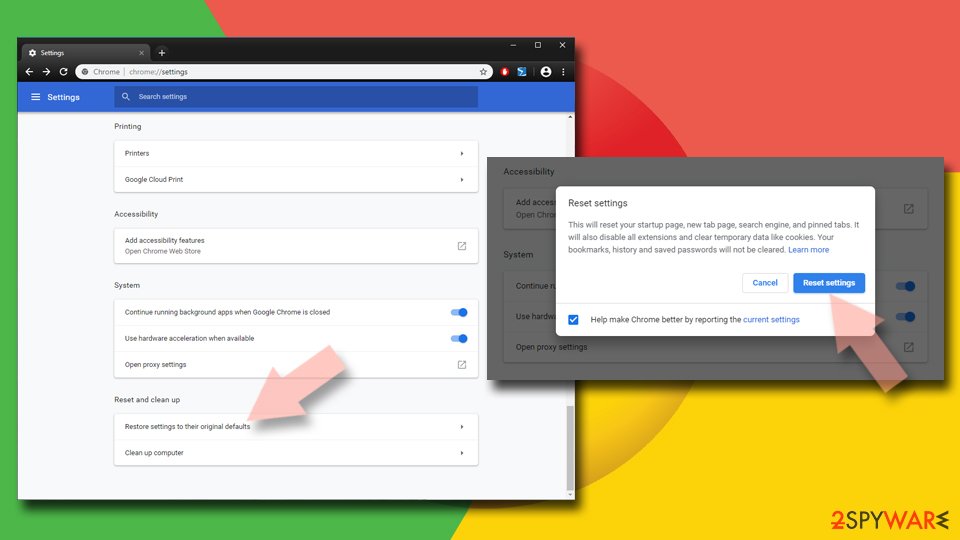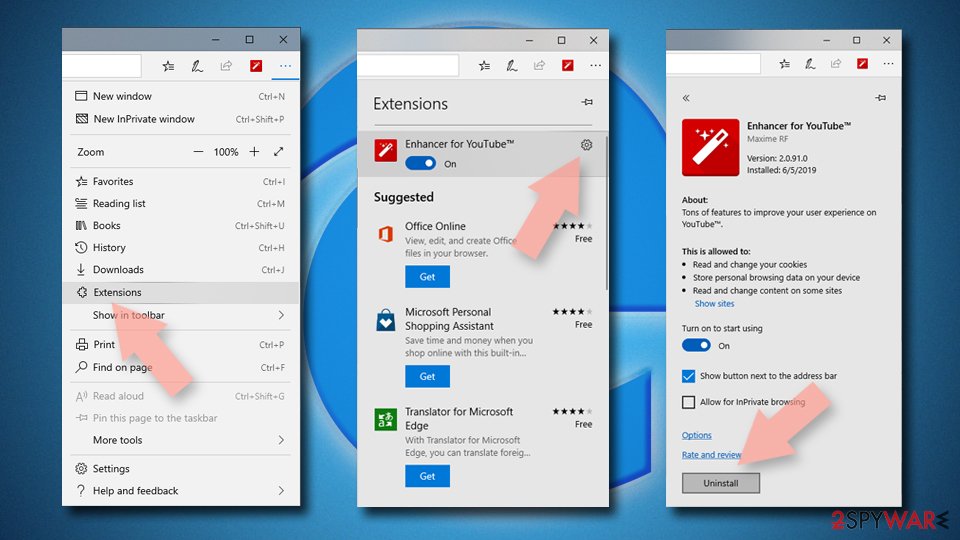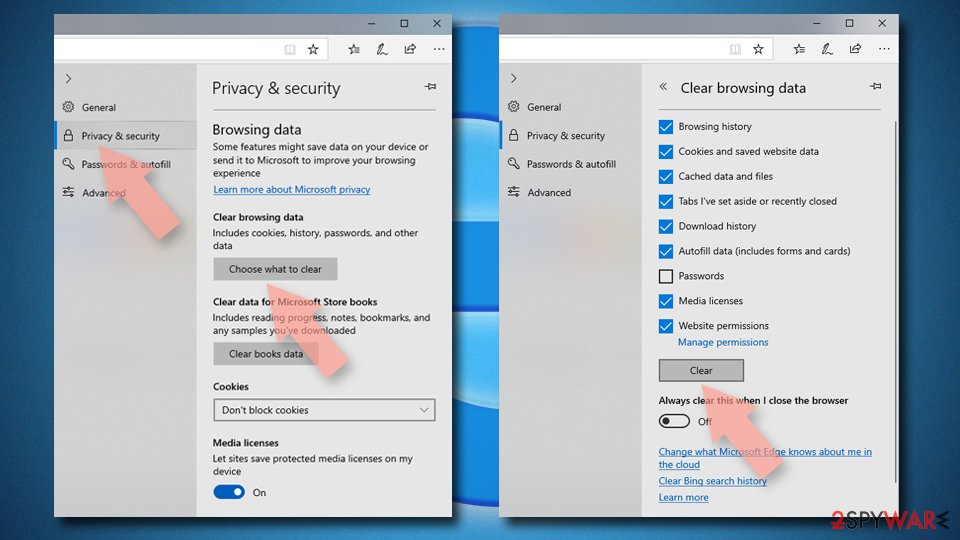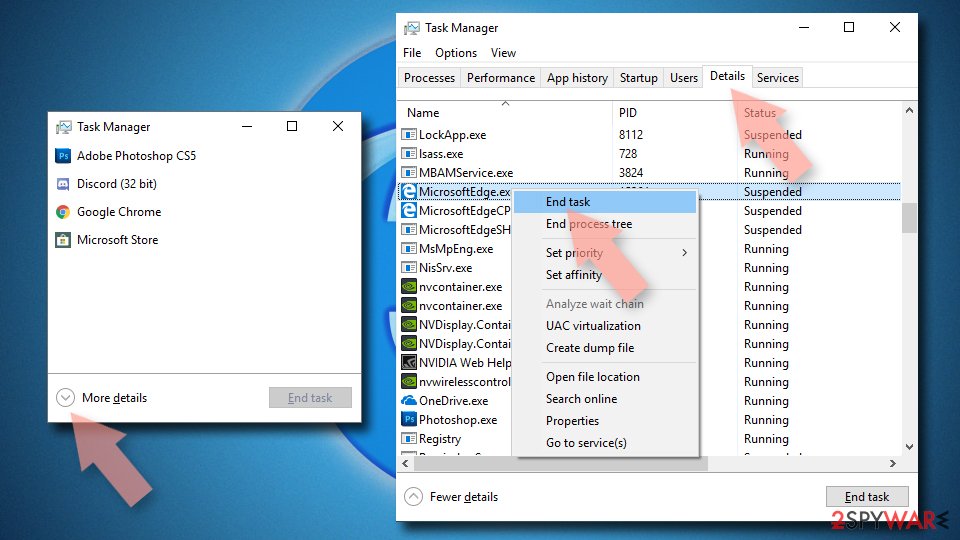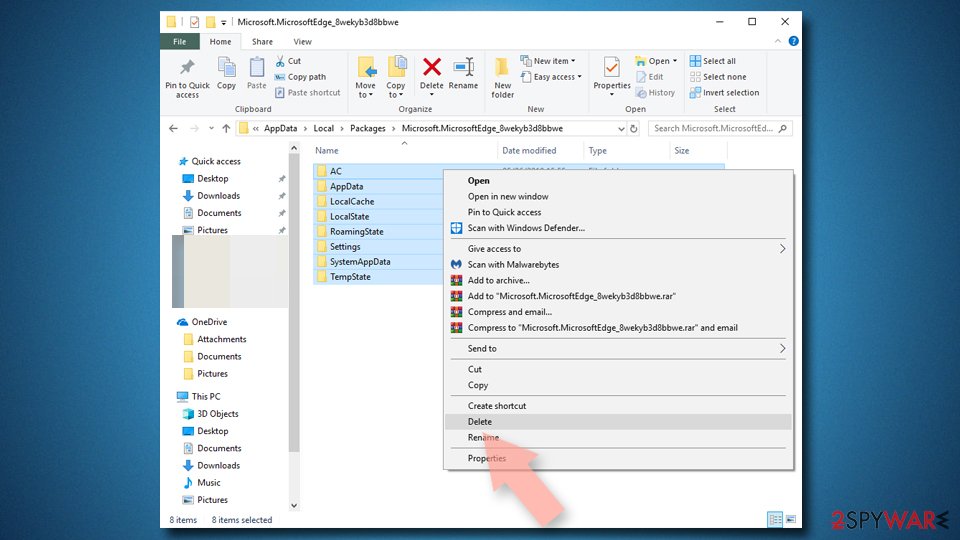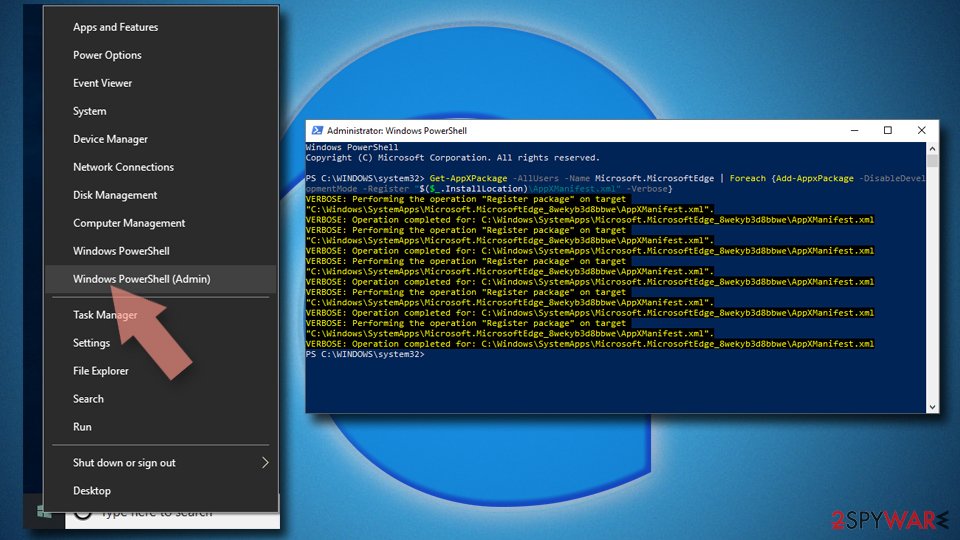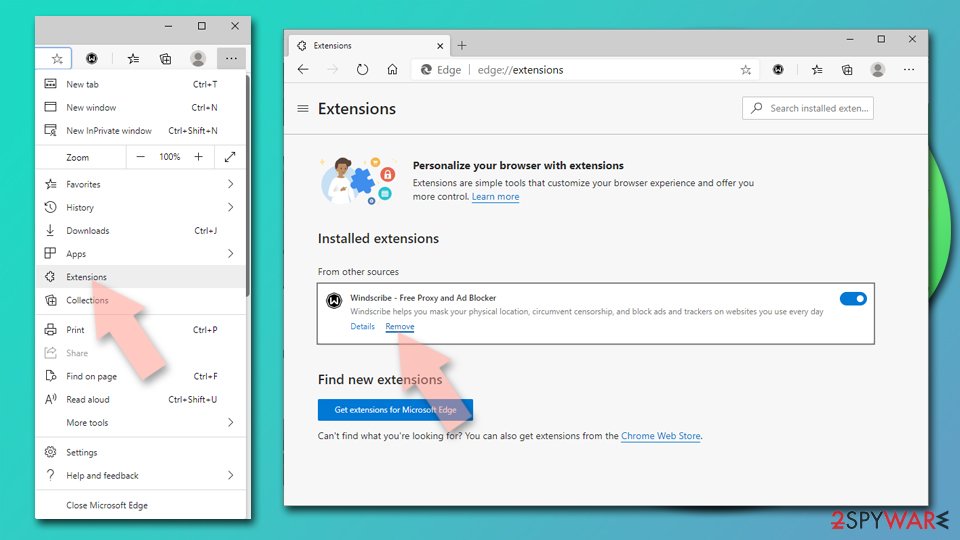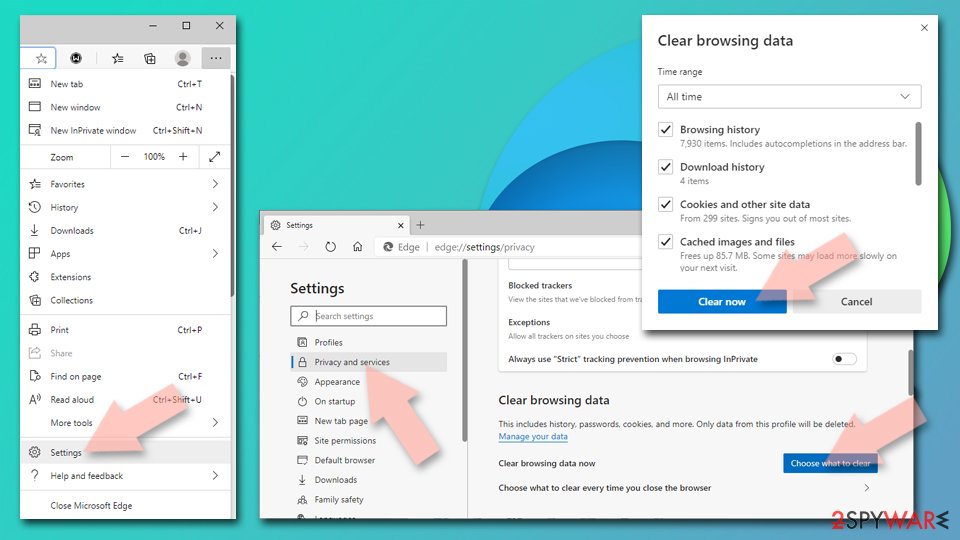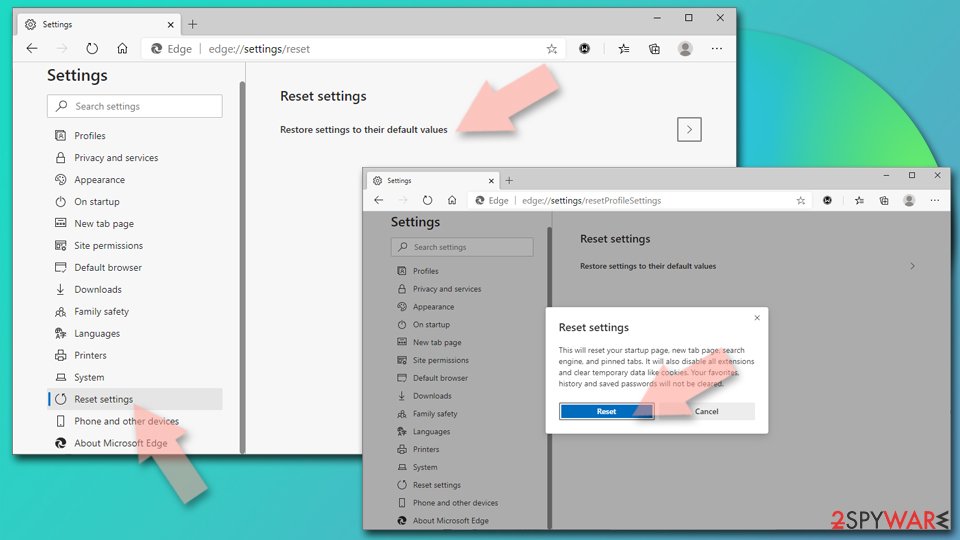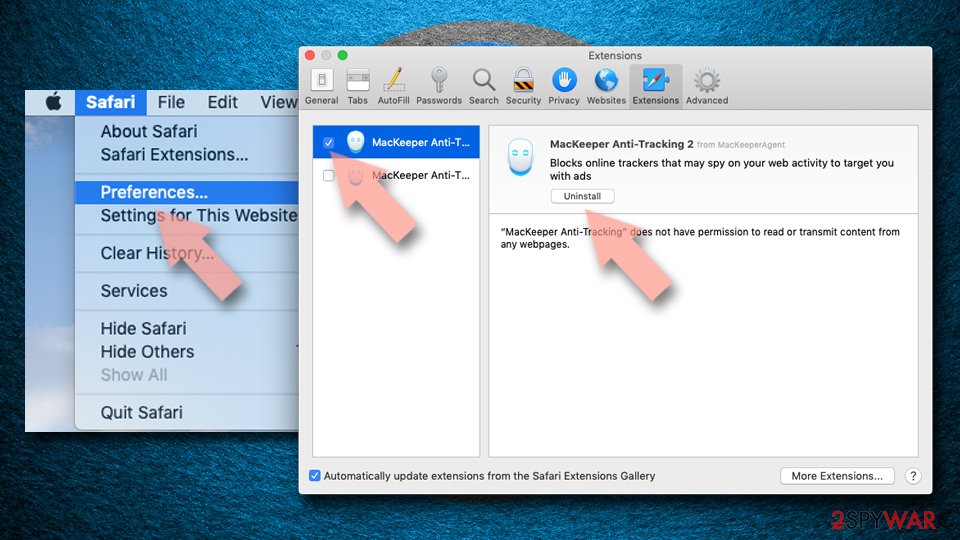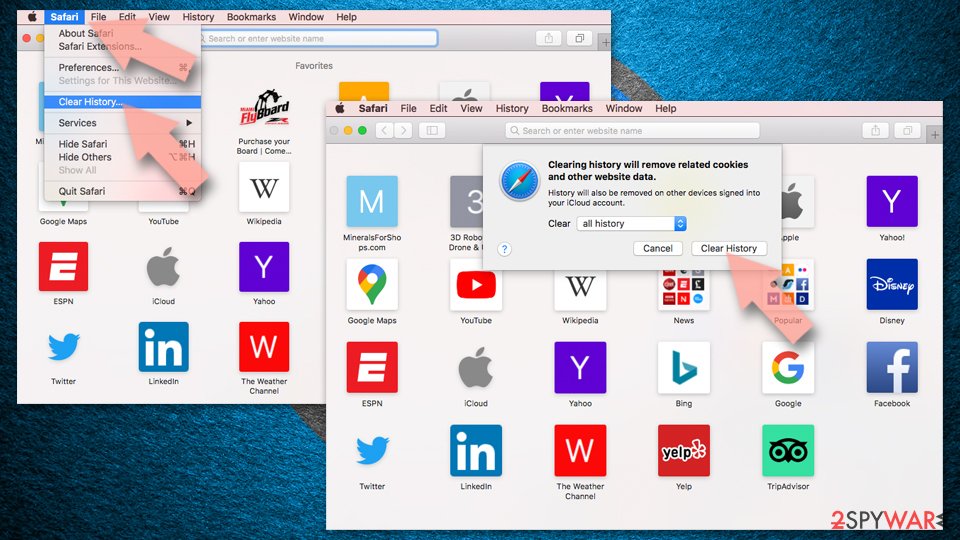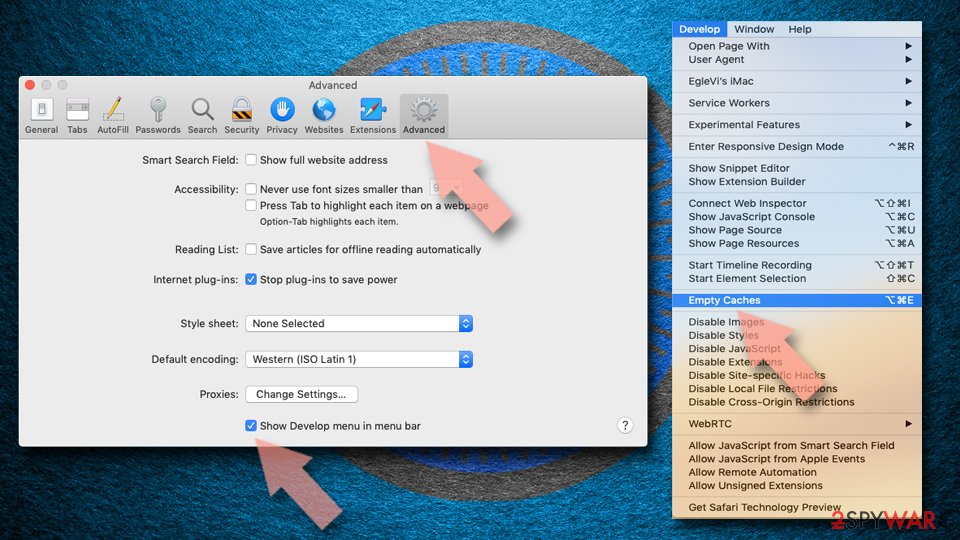Firefox virus. 6 versions identified. 2021 removal Guide
Firefox redirect virus Removal Guide
What is Firefox redirect virus?
Firefox virus is an intruder that affects the performance of the web browser significantly

This is an ad-supported site, so the main goal is to generate revenue for the publisher by redirecting the online traffic of the victim to needed sponsored sites. Usually, this cyber threat enters the system in the software bundle and immediately hijacks the Mozilla Firefox web browser. Thus, it operates as a browser hijacker.
All the redirects caused by Firefox virus show up out of nowhere and deliver content like gambling pages, services, promotional material pushing software, applications or even fake updates and cracks. Any material can appear useful and tools needed, but remember that getting anything from such pop-up ads or questionable sites can lead to more severe malware infiltrations.
| Name | Firefox virus |
| Type | Browser hijacker |
| Danger level | Medium. Browser hijackers only take control over the affected web browser in order to display ads, force redirects to the affiliate website, and collect browsing-related information for advertising reasons. |
| Symptoms | Freezing and crashing Mozilla Firefox due to the increased amount of ads and pop-ups, redirects to highly suspicious websites, data tracking activities. |
| Distribution methods | Bundled with freeware or shareware, obfuscated browser extensions. |
| Elimination | Get anti-malware tool and remove the PUP fully |
| PUP avoidance | Keep tools like FortectIntego, and the program blocks unwanted content and even programs before they get to access your machine |
There are many annoying features of such cyber infections that come on your browser without any permission and affect the whole performance of the device besides crashing the web browser itself. Firefox virus can, unfortunately, also add other applications, browser extensions, or additional PUPs to your computer without requiring any permission.
Additionally, excessive advertising is another bothering feature. Commercial pop-up ads, links, banner ads, and similar content cram your browser screen. Despite how attractive they may look, note that such ads may contain malicious links or misguide you to the corrupted domains[1].
Furthermore, later Firefox virus versions continue spying on your browsing peculiarities and collecting data about visited domains, surfing frequency, and further technical information. Usually, such information is shared with third-party commercial content creators. Such data may be acquired by hackers. Consequently, make a rush to remove the redirect virus.
Due to the popularity of such redirect virus, you might get misguided to a web page containing exploit kits[2]. It is futile to underestimate such malware as they often “cooperate” with more aggressive threats – ransomware. Likewise, improve your protection of the device. One of the practical tools happens to be SpyHunter 5Combo Cleaner or Malwarebytes.

Firefox virus versions
Mozilla Firefox is the familiar web browser that gets used often all over the world, so it becomes more attractive for malicious actors too. The browser itself is not distributing any malware, but third-party advertisements, commercial content redirects include various unwanted installations, malicious content, and direct malware. Unfortunately, scammers learn new deceptive techniques each day. Pop-ups and banners that show up on the screen and messages that cause browser freezes have different tactics:
Technical support scams
These pop-up messages or even lock screens that freeze up your browser to deliver warnings about issues and tells that people need to call a phone number or download the tool to allow the malware scan on the machine. Malicious actors use Mozilla or other brand names, logos, other legitimate information to scare users into updating their browser or system using the provided fixing methods.
However, alleged representatives of Mozilla are not behind the phone that you are offered to call. Scammers behind the Firefox virus message try to access your device remotely or trick you into paying for their service. Once you allow access on your PC for these attackers or try to pay via online banking, your personal details, credentials, and logins can get recorded and stolen.
Critical Firefox Update scam
Critical Firefox Update is one of the more severe scams because it delivers additional malware, in this case, a trojan. During this, fake alerts show up on the browser stating about errors that can be crucial for your system. However, these pop-ups are not reporting about the real damage. The aim of this scam is to trick people into installing allegedly needed software and updates. In reality, the file and application the victims end up installing is malware – Kovter trojan. Such scams can have different purposes and include various malware from cryptocurrency miners to ransomware.
Urgent Firefox Update scam
Urgent Firefox Update is another particular version of such browser scams that show fake alerts, warning and tricks people into installing rogue tools or even malware. Tactics resemble other tech support or scareware scams, but the main difference is that this version of the virus claims to reports about the needed software update. However, creators aim to trick people into downloading suspicious executable or javascript files that should fix all the issues. The site is filled with additional layers of direct malware download launching buttons. People encounter even more issues with the machine and their browser after the alleged system updating.
Firefox requires a manual update scam
Firefox requires a manual update is another scam involving messages about a crucial update that tricks people into installing unwanted in-browser content or system tools and fake antivirus programs. This is a program that triggers additional redirects to questionable sites filled with malicious code, pop-ups with commercial material, and other intrusive behavior. These scam campaigns also trigger direct downloads and launches of software installations, during which your device gets infected with questionable applications. 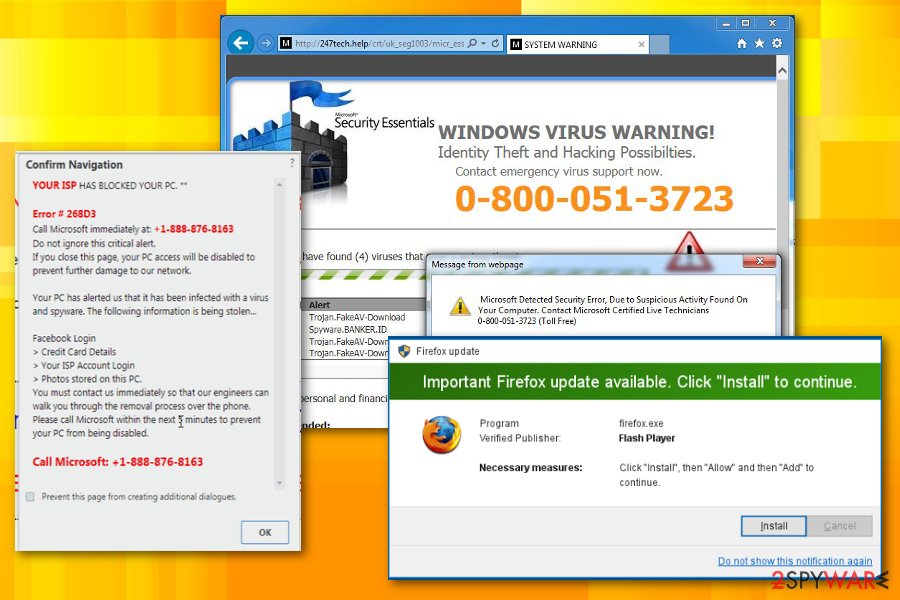
Firefox redirects
Browser hijackers are not the only potentially unwanted programs that frustrate people due to intrusive behavior and questionable content. Adware-type programs are the ones that cause many redirects or even push notifications coming to your browser or desktop directly.
These programs show nothing besides tons of redirects to various pages filled with ads, commercial material, coupons, deals. All those offers and discounts trick people into clicking on the pop-up or banner and this way your screen cannot display anything else besides all the questionable advertising material. These redirects involve deceptive ads, fake giveaways, promotional content.
Wyciwyg redirect
While Wyciwyg redirect might seem like a hint of malware, in fact, it may suggest a bug in your browser or browser extension. Some Firefox users reported noticing “wyciwyg” link while surfing the Web. In some cases, their browsing session is not interrupted, but instead or along with “http:” indicator, they get the latter phrase added to their URLs. Alternatively, some users have experienced a more aggravating issue as the link redirects them to a blank page:
For the past couple of days Firefox always redirects to a blank page when I try to visit any page on www.kongregate.com. When I use IE tab on the blank page it comes up with the url “wyciwyg://#/www.kongregate.com” where # is a number that changes occasionally.[3]
There are two explanations for such a phenomenon. Firstly, the wyciwyg link is the result of the Adblock extension bug. Updating the extension to the latest edition or disabling and then enabling again might be helpful. Secondly, if besides the link, additional new tabs promoting gaming and gambling sites, then scan the browser or reset it to get rid of adware and other forms of browser infections. By performing automatic Firefox virus removal, you can eliminate all the content that affects your machine in multiple ways.
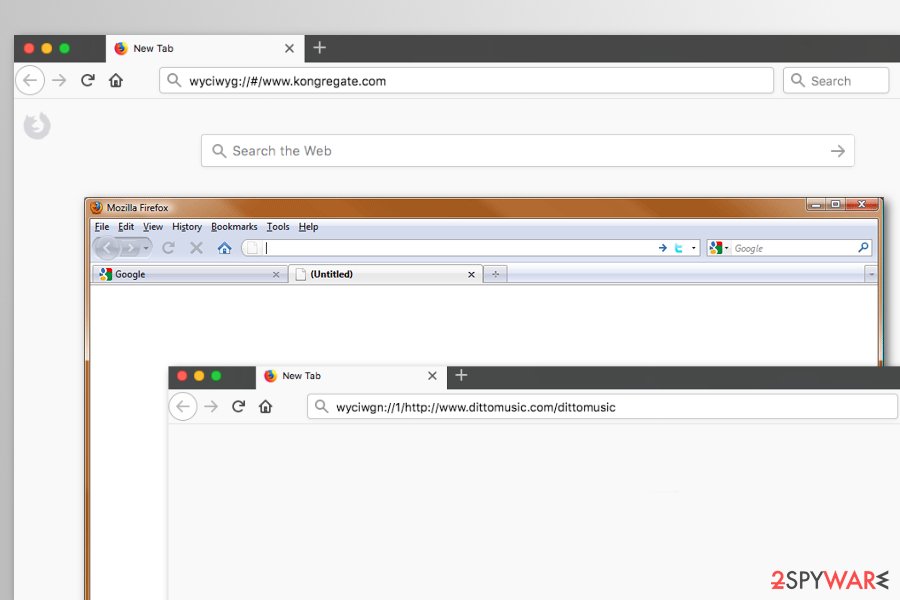
Other redirect viruses
Firefox virus makes the system vulnerable to other similar infections, such as:
- IE redirect virus,
- Google Redirect virus,
- Bing redirect virus,
- Safari redirect virus,
- Opera redirect virus,
- Chrome virus,
- Yahoo redirect virus,
- and similar.
Depending on each browser and each particular infection, potentially unwanted programs can have different purposes and levels of danger. When the browser infection is focused on social engineering and scamming tactics, the infiltration can lead to issues regarding your personal files, privacy.
However, in most cases potentially unwanted applications might cause problems on the affected web browsers by delivering intrusive content, redirecting to unwanted and suspicious pages:
- redirects to commercial, phishing, tech support scam, and other highly suspicious websites;
- promotions of potentially unwanted programs or browser extensions;
- delivery of misleading ads that ask to install fake updates, PC optimization, or security software;
- display malware-laden ads;
- silent installation of browser extensions, toolbars, or add-ons.
Due to occasional cyber attacks on Mozilla Firefox, its developers try to keep up with the latest tendencies and issue patches for its vulnerabilities[4]. However, there is a long way to go as cybercriminals devise new hacking techniques by exploiting the flaws of the search engine[5].
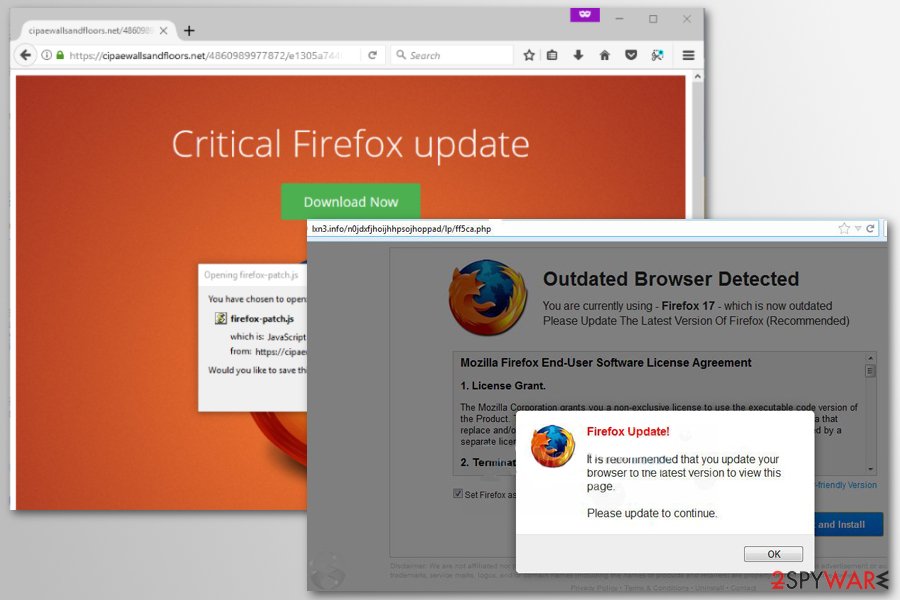
Bundling is responsible for unwanted application promotion
Firefox hijack occurs after the installation of freeware and shareware. Usually, programs that are used for distributing such viruses are various download managers, PDF creators, video streaming software, and similar applications. Monitor the installation guide to spot additional components on time.
Frequently, they are presented in small print, so you have to select „Custom“ or „Advanced“ mode. Likewise, you will be able to remove the potentially fraudulent applications before they settle on the device. Note that Mozilla Firefox and its developers are not related to this problem.
In reality, it's the browser hijacker, which is hiding in your computer. Lastly, you should beware of a common practice among hijackers to develop infected domains which bear almost identical URL name addresses to popular web pages [6]. For example, watch out for an Amazon impersonator – Amazoon.com. What is more, check the official publisher of the program before installing it.
Eliminate Firefox virus and fix your browser
If you intend to root out the infection permanently, we recommend opting for automatic Firefox virus removal. Anti-spyware applications that are recommended to you right below can ensure that all elements of the hijacker that is bothering you are eliminated.
These programs can also come in handy when you need to remove more severe threats, such as malware threats or ransomware viruses. Of course, you can remove Firefox virus manually, but, for an extra guarantee, we recommend combining these two methods. Lastly, stay vigilant while downloading new applications. Other users' comments provide you valuable tips on what websites and apps to avoid programs capable of causing redirects and similar issues.
You may remove virus damage with a help of FortectIntego. SpyHunter 5Combo Cleaner and Malwarebytes are recommended to detect potentially unwanted programs and viruses with all their files and registry entries that are related to them.
Getting rid of Firefox redirect virus. Follow these steps
Uninstall from Windows
Instructions for Windows 10/8 machines:
- Enter Control Panel into Windows search box and hit Enter or click on the search result.
- Under Programs, select Uninstall a program.

- From the list, find the entry of the suspicious program.
- Right-click on the application and select Uninstall.
- If User Account Control shows up, click Yes.
- Wait till uninstallation process is complete and click OK.

If you are Windows 7/XP user, proceed with the following instructions:
- Click on Windows Start > Control Panel located on the right pane (if you are Windows XP user, click on Add/Remove Programs).
- In Control Panel, select Programs > Uninstall a program.

- Pick the unwanted application by clicking on it once.
- At the top, click Uninstall/Change.
- In the confirmation prompt, pick Yes.
- Click OK once the removal process is finished.
Delete from macOS
Remove items from Applications folder:
- From the menu bar, select Go > Applications.
- In the Applications folder, look for all related entries.
- Click on the app and drag it to Trash (or right-click and pick Move to Trash)

To fully remove an unwanted app, you need to access Application Support, LaunchAgents, and LaunchDaemons folders and delete relevant files:
- Select Go > Go to Folder.
- Enter /Library/Application Support and click Go or press Enter.
- In the Application Support folder, look for any dubious entries and then delete them.
- Now enter /Library/LaunchAgents and /Library/LaunchDaemons folders the same way and terminate all the related .plist files.

Remove from Mozilla Firefox (FF)
Remove dangerous extensions:
- Open Mozilla Firefox browser and click on the Menu (three horizontal lines at the top-right of the window).
- Select Add-ons.
- In here, select unwanted plugin and click Remove.

Reset the homepage:
- Click three horizontal lines at the top right corner to open the menu.
- Choose Options.
- Under Home options, enter your preferred site that will open every time you newly open the Mozilla Firefox.
Clear cookies and site data:
- Click Menu and pick Settings.
- Go to Privacy & Security section.
- Scroll down to locate Cookies and Site Data.
- Click on Clear Data…
- Select Cookies and Site Data, as well as Cached Web Content and press Clear.

Reset Mozilla Firefox
If clearing the browser as explained above did not help, reset Mozilla Firefox:
- Open Mozilla Firefox browser and click the Menu.
- Go to Help and then choose Troubleshooting Information.

- Under Give Firefox a tune up section, click on Refresh Firefox…
- Once the pop-up shows up, confirm the action by pressing on Refresh Firefox.

Remove from Google Chrome
Delete malicious extensions from Google Chrome:
- Open Google Chrome, click on the Menu (three vertical dots at the top-right corner) and select More tools > Extensions.
- In the newly opened window, you will see all the installed extensions. Uninstall all the suspicious plugins that might be related to the unwanted program by clicking Remove.

Clear cache and web data from Chrome:
- Click on Menu and pick Settings.
- Under Privacy and security, select Clear browsing data.
- Select Browsing history, Cookies and other site data, as well as Cached images and files.
- Click Clear data.

Change your homepage:
- Click menu and choose Settings.
- Look for a suspicious site in the On startup section.
- Click on Open a specific or set of pages and click on three dots to find the Remove option.
Reset Google Chrome:
If the previous methods did not help you, reset Google Chrome to eliminate all the unwanted components:
- Click on Menu and select Settings.
- In the Settings, scroll down and click Advanced.
- Scroll down and locate Reset and clean up section.
- Now click Restore settings to their original defaults.
- Confirm with Reset settings.

Remove from Microsoft Edge
Delete unwanted extensions from MS Edge:
- Select Menu (three horizontal dots at the top-right of the browser window) and pick Extensions.
- From the list, pick the extension and click on the Gear icon.
- Click on Uninstall at the bottom.

Clear cookies and other browser data:
- Click on the Menu (three horizontal dots at the top-right of the browser window) and select Privacy & security.
- Under Clear browsing data, pick Choose what to clear.
- Select everything (apart from passwords, although you might want to include Media licenses as well, if applicable) and click on Clear.

Restore new tab and homepage settings:
- Click the menu icon and choose Settings.
- Then find On startup section.
- Click Disable if you found any suspicious domain.
Reset MS Edge if the above steps did not work:
- Press on Ctrl + Shift + Esc to open Task Manager.
- Click on More details arrow at the bottom of the window.
- Select Details tab.
- Now scroll down and locate every entry with Microsoft Edge name in it. Right-click on each of them and select End Task to stop MS Edge from running.

If this solution failed to help you, you need to use an advanced Edge reset method. Note that you need to backup your data before proceeding.
- Find the following folder on your computer: C:\\Users\\%username%\\AppData\\Local\\Packages\\Microsoft.MicrosoftEdge_8wekyb3d8bbwe.
- Press Ctrl + A on your keyboard to select all folders.
- Right-click on them and pick Delete

- Now right-click on the Start button and pick Windows PowerShell (Admin).
- When the new window opens, copy and paste the following command, and then press Enter:
Get-AppXPackage -AllUsers -Name Microsoft.MicrosoftEdge | Foreach {Add-AppxPackage -DisableDevelopmentMode -Register “$($_.InstallLocation)\\AppXManifest.xml” -Verbose

Instructions for Chromium-based Edge
Delete extensions from MS Edge (Chromium):
- Open Edge and click select Settings > Extensions.
- Delete unwanted extensions by clicking Remove.

Clear cache and site data:
- Click on Menu and go to Settings.
- Select Privacy, search and services.
- Under Clear browsing data, pick Choose what to clear.
- Under Time range, pick All time.
- Select Clear now.

Reset Chromium-based MS Edge:
- Click on Menu and select Settings.
- On the left side, pick Reset settings.
- Select Restore settings to their default values.
- Confirm with Reset.

Delete from Safari
Remove unwanted extensions from Safari:
- Click Safari > Preferences…
- In the new window, pick Extensions.
- Select the unwanted extension and select Uninstall.

Clear cookies and other website data from Safari:
- Click Safari > Clear History…
- From the drop-down menu under Clear, pick all history.
- Confirm with Clear History.

Reset Safari if the above-mentioned steps did not help you:
- Click Safari > Preferences…
- Go to Advanced tab.
- Tick the Show Develop menu in menu bar.
- From the menu bar, click Develop, and then select Empty Caches.

After uninstalling this potentially unwanted program (PUP) and fixing each of your web browsers, we recommend you to scan your PC system with a reputable anti-spyware. This will help you to get rid of Firefox redirect registry traces and will also identify related parasites or possible malware infections on your computer. For that you can use our top-rated malware remover: FortectIntego, SpyHunter 5Combo Cleaner or Malwarebytes.
How to prevent from getting browser hijacker
Stream videos without limitations, no matter where you are
There are multiple parties that could find out almost anything about you by checking your online activity. While this is highly unlikely, advertisers and tech companies are constantly tracking you online. The first step to privacy should be a secure browser that focuses on tracker reduction to a minimum.
Even if you employ a secure browser, you will not be able to access websites that are restricted due to local government laws or other reasons. In other words, you may not be able to stream Disney+ or US-based Netflix in some countries. To bypass these restrictions, you can employ a powerful Private Internet Access VPN, which provides dedicated servers for torrenting and streaming, not slowing you down in the process.
Data backups are important – recover your lost files
Ransomware is one of the biggest threats to personal data. Once it is executed on a machine, it launches a sophisticated encryption algorithm that locks all your files, although it does not destroy them. The most common misconception is that anti-malware software can return files to their previous states. This is not true, however, and data remains locked after the malicious payload is deleted.
While regular data backups are the only secure method to recover your files after a ransomware attack, tools such as Data Recovery Pro can also be effective and restore at least some of your lost data.
- ^ Definition - What does Malvertising mean?. Techopedia. Where IT and Business meet.
- ^ Exploit Kit. TrendMicro. Securing Your Journey to the Cloud.
- ^ Firefox redirects to wyciwyg page. Mozilla support. The official website.
- ^ Kevin Downey,. Security alert: 2,000 browser extensions vulnerable to malware attacks. Komando. America's Digital Goddess.
- ^ Dan Goodin. Firefox 0-day in the wild is being used to attack Tor users. Ars Technica. A trusted source for technology news, and tech policy analysis.
- ^ Elizabeth Weise. Hackers use typosquatting to dupe the unwary with fake news, sites. USA Today. Politics, sport, life, IT news.
